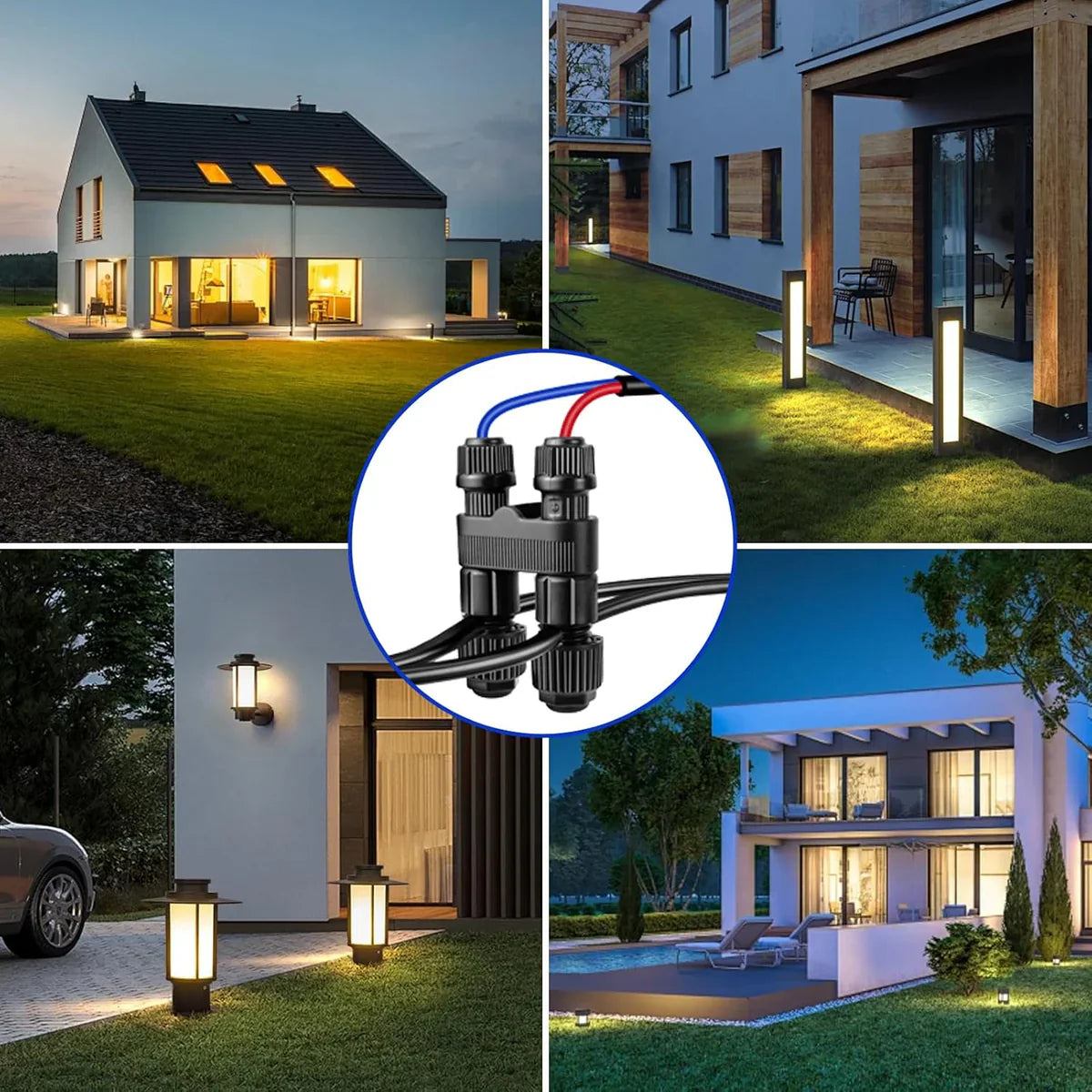In modern LED lighting systems, wire connectors may appear to be small and insignificant components, but in reality, they play a crucial role in ensuring stable current transmission and long-term system reliability. Whether used in outdoor landscape lighting, architectural installations, or low-voltage smart control setups, a high-quality LED wire connector directly determines the efficiency, safety, and durability of the entire system.
This article explores the electrical performance of LED wire connectors from three key perspectives — contact resistance, safety rating, and reliability — and provides practical insights for selecting the right connector for your LED projects.
1. Contact Resistance: The Foundation of Electrical Performance
1.1 What Is Contact Resistance?
Contact resistance refers to the small resistance that forms at the interface between two conductors in contact. Ideally, this resistance should be zero, but in reality, factors like surface oxidation, roughness, or insufficient pressure can increase resistance.
1.2 The Impact of High Contact Resistance
When contact resistance is too high, several issues can arise:
-
Power Loss: Increased resistance leads to heat generation and wasted energy.
-
Overheating and Aging: Localized heating accelerates the degradation of plastic housings or insulation materials.
-
Uneven Brightness or Flickering: Even small voltage drops in LED systems can cause inconsistent brightness or flicker issues.
1.3 Design Features of High-Quality Connectors
Premium LED wire connectors typically include:
-
Tin-plated or nickel-plated copper contacts to resist oxidation;
-
High-tension spring structures that maintain firm contact pressure;
-
Multi-point contact design to reduce impedance and improve conductivity.
These designs ensure low-resistance, stable, and long-lasting electrical performance even under continuous use.
2. Safety Rating: Protection Defines Application Range
2.1 IP Waterproof and Dustproof Ratings
Outdoor LED applications such as garden paths, patios, or façade lighting require connectors with strong environmental protection.
Common protection ratings include:
-
IP65: Dust-tight and resistant to low-pressure water jets.
-
IP67: Can withstand temporary immersion.
-
IP68: Suitable for continuous underwater operation.
For outdoor landscape or garden lighting, IP68-rated connectors are highly recommended to prevent corrosion, short-circuiting, or electric shock due to moisture intrusion.
2.2 Voltage and Current Ratings
Even though most LED systems operate at low voltage (12V–24V DC), it’s important to ensure connectors meet proper electrical standards.
High-quality connectors will specify:
-
Rated voltage (e.g., DC 12–48V)
-
Rated current (e.g., 10A–30A)
-
Compatible wire gauge (e.g., 12–18 AWG)
Choosing connectors outside these parameters can lead to overheating, poor conductivity, or insulation failure — all of which compromise safety and performance.
3. Reliability: Ensuring Long-Term Stability
3.1 Environmental Durability
Outdoor LED installations face tough conditions — UV exposure, humidity, temperature changes, and dust accumulation.
Reliable connectors often feature:
-
Nylon or PVC flame-retardant housings;
-
UV-resistant coatings to prevent degradation;
-
Sealed or potting designs for moisture and corrosion protection.
3.2 Mechanical Stability and Plug Life
Mechanical reliability is just as critical as electrical performance.
Low-quality connectors may crack, loosen, or seize up after repeated use.
In contrast, locking or quick-connect structures provide both easy installation and vibration resistance — ensuring the connection remains secure even in dynamic environments.
3.3 Comprehensive Testing for Reliability
Trusted manufacturers perform multiple quality assurance tests, such as:
-
Salt spray tests for corrosion resistance;
-
High-temperature load tests for electrical stability;
-
Insertion and withdrawal cycle tests for mechanical endurance.
These tests guarantee that connectors maintain consistent performance across diverse installation conditions.
4. Application Guidelines for LED Systems
When integrating LED lighting, the right connector simplifies both installation and maintenance. Key points to consider include:
-
Match wire gauge and system load to prevent voltage drop or overheating.
-
Use waterproof quick-connect types for outdoor or damp environments.
-
Ensure correct polarity, especially in RGB or multi-channel LED setups.
-
Select certified products (UL, CE, RoHS) to ensure safety and compliance.
5. Recommended Product: Waterproof Low Voltage Wire Connector
For high-performance outdoor lighting systems, we recommend the following LED wire connector solution:
-
Low Voltage Wire Connectors (12-Pack)
Waterproof, corrosion-resistant, IP68-rated connectors compatible with 12–18 AWG wires. Ideal for garden, pathway, and landscape lighting.
👉 View Product Details
6. Conclusion
In an LED lighting system, connectors are not merely “small accessories” — they are the foundation of electrical stability and system reliability.
A high-quality LED wire connector reduces contact resistance, ensures efficient current transmission, and provides robust protection against environmental challenges.
By choosing certified, well-engineered connectors, lighting designers and installers can achieve higher efficiency, longer lifespan, and safer operation for any LED project.

